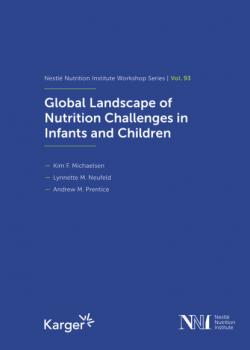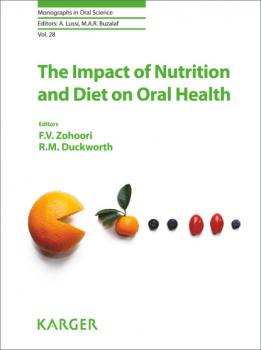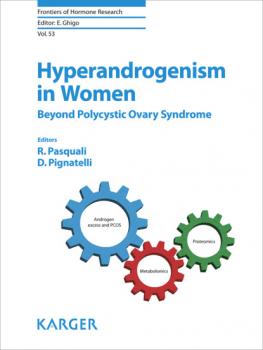Группа авторов
Список книг автора Группа авторовVaccines for Older Adults: Current Practices and Future Opportunities
Many infectious diseases are more frequent and are associated with high morbidity and mortality in older adults. Vaccination is the most efficient strategy to prevent infections, and older adults are an important target population for vaccination in order to promote health in this age group. Age-related changes in the immune system as well as other factors, such as comorbidities, obesity or frailty, influence vaccine-induced immune responses in old age. Awareness that vaccines developed for children might not be optimal for adults, and particularly for the older population, has only arisen in the recent past. Vaccination against influenza, pneumococcal disease, and herpes zoster is specifically recommended for older adults in many countries, and various strategies have been pursued in order to optimize these vaccines. However, there are still many pathogens, which severely affect the older population, but for which no vaccines are currently available. Extensive research and development are ongoing to further improve existing vaccines and to design novel vaccines in order to provide protection for this vulnerable age group. In order to exploit the full protective potential of vaccines it is essential to improve vaccine uptake and overcome vaccine hesitancy by providing information and education to stakeholders, health care professionals, and the general public. This book is relevant for researchers working on age-related changes in the immune system or on vaccine development, for health care professionals treating older patients, and for the stakeholders and decision makers involved in vaccination recommendations and implementation.
Nutrition and Growth
Children’s growth is a common concern to all health care providers treating neonates, infants, toddlers, children, and adolescents. Defining the best nutrition for healthy and active children as well as for those who suffer from acute or chronic disease is relevant to the children, their care givers, and to health care providers. For this publication, an international group of experts in nutrition, metabolism, gastroenterology, endocrinology, and auxology have selected some of the most important manuscripts published between July 2018 and June 2019. Each paper is supplemented with editorial comments aiming to highlight the lessons that can be learnt. This book provides a significant contribution to the knowledge base and will help all subspecialties of health care providers dealing with the pediatric age group to get updated on some of the key issues in the interaction between nutrition and growth.
Global Landscape of Nutrition Challenges in Infants and Children
Malnutrition among children remains a persistent problem around the world. This publication aims to map the challenges within the global landscape of childhood nutrition and considers the importance of nutrition both prior to conception and in children beyond two years of age. Session I provides an updated picture of malnutrition around the world, the recent progress that has been made in eliminating malnutrition in all its forms and several data limitations to track such progress. The role of milk in early life is covered in session II. The chapters describe different aspects of cow’s milk and the possible role of optimized plant proteins as an alternative to dairy ingredients in treating children with severe acute malnutrition. Session III considers the ramifications of environmental constraints to healthy child growth. The chapters cover the issue of how persistent gut damage and systemic inflammation can precipitate malnutrition as well as the putative effects of alterations in the gut microbiota. This overview of diverse issues is relevant to the epidemiology, biology of nutrition in early life, programmatic implications, and future directions.
The Impact of Nutrition and Diet on Oral Health
Most oral diseases are preventable, yet they remain the most globally common noncommunicable disorders, affecting people throughout their lifetime. Lifestyle, including diet and food choice, is central to the occurrence of oral disease. Nutrition and diet can impact the development and status of the oral cavity as well as the progression of illness. Also, poor oral health can influence the ability to eat and, consequently, to maintain an adequate diet and nutrient balance. This book, consisting of 14 chapters, provides current information on the impact of nutrients (macro- and micro-elements and vitamins) and diet on oral health and vice versa (i.e., the impact of oral health on diet/nutrition). It also reviews possible oral health effects of probiotics as well as relationships between genotype and diet, which are important for determining oral disease risk. This book is a helpful resource for under- and postgraduate students. It will also be useful to dentists and nutritionists/dietitians as they integrate nutrition education into medical practice.
Endocrinología pediátrica práctica en poblaciones con recursos limitados
Este libro fue concebido como un recurso accesible y útil para los pediatras e incluso para médicos generales y otros trabajadores de la salud, con el objetivo de proporcionar lineamientos claros de diagnóstico y estrategias de tratamiento. Muchos endocrinólogos experimentados en todo el mundo han contribuido a este libro, muchos de los cuales han viajado y han enseñado ampliamente en países en vías de desarrollo. El libro resultante no tiene la intención de ocupar el lugar de los textos estándar; su objetivo es proporcionar información breve y actualizada sobre las afecciones endocrinas, con énfasis en las posibilidades de diagnóstico y las pruebas analíticas y de imagen más útiles y de bajo costo, así como en el tratamiento más apropiado de acuerdo con la posibilidad que se tiene de utilizar recursos terapéuticos cuando, independientemente de que estén indicados, resulten accesibles. También se proporciona una guía sobre cómo acceder a tecnologías más sofisticadas cuando sea necesario. «La influencia de este libro de texto va mucho más allá del diagnóstico y el tratamiento de las enfermedades endocrinas pediátricas en los países en vías de desarrollo. Apoyará las iniciativas existentes que apuntan a la creación de la capacitación en Endocrinología Pediátrica en entornos donde estas condiciones no se reconocen en gran medida. Servirá como un recurso para la capacitación de enfermeras, dietistas, funcionarios de salud y otros profesionales de la salud que trabajan como aliados de los endocrinólogos pediátricos recién capacitados. Les proporcionará una herramienta para abogar por los niños y adolescentes con enfermedades endocrinas y los ayudará a sensibilizar a los legisladores y a las autoridades locales de salud pública sobre la importancia de proporcionar a los pacientes fármacos simples y relativamente asequibles que figuran en la Lista de medicamentos esenciales para niños de la Organización Mundial de la Salud (OMS) (tales como insulina, hidrocortisona, fludrocortisona, diazóxido y levotiroxina) pero que, a menudo, no están disponibles a nivel local.» Jean-Pierre Chanoine, Profesor Clínico, Hospital de Niños de Columbia Británica y Universidad de Columbia Británica, Vancouver.
Hyperandrogenism in Women
Hyperandrogenism profoundly affects women’s lives from lowering self-esteem to changing cognition and affective motivation. The polycystic ovary syndrome (PCOS) is the most common androgen excess disorder worldwide. While it is not the focus of this book, some aspects are discussed. The aim of this book is to improve understanding of androgen excess and its impact on several conditions. Topics include development of adipose tissue in females, insulin sensitivity, congenital adrenal hyperplasia, and Cushing’s disease/syndrome. There is also a discussion of PCOS with emphasis on in utero origins and specific genetic and epigenetic factors. This book provides a wealth of relevant information for every endocrinologist and gynecologist who wants to broaden their knowledge of androgens in various conditions.









